Link equity is one of the most valuable assets for any website aiming to climb to the top of search engine results. Essentially, it is a metric used by SEO professionals to measure the value and authority a link passes to a webpage.
High-quality backlinks are the cornerstone of building link equity. They act as a form of recommendation, directing users to your site and boosting its ranking in search results. The logic is simple: the more such recommendations you have, the greater your potential to improve your site’s position in search engine results, driving more organic traffic and strengthening your online reputation.
Each link is not just a connection between two websites but also an endorsement that your resource is valuable and worth attention. However, links from questionable sources can harm your rankings, much like negative reviews can damage a business’s reputation.
Link equity can also be likened to a business’s reputation in the real world. When your site earns backlinks from authoritative and popular resources, it lays the foundation for your online prestige. And just as business owners value their reputation, so should website owners.
In other words, search engines consider not only the number of links pointing to your site but also how those links enhance your resource’s value. In a highly competitive environment, every step matters – it determines whether your site will appear on the first page of search results or get lost in the sea of information.
So, let’s explore this powerful mechanism that not only boosts your site’s rankings but also establishes it as an authoritative resource in your niche, positioning your brand as one worth noticing. How can you maximize its benefits?
Let’s break down how link equity works, its key features and advantages, and why it’s a critical component of a comprehensive link-building strategy.
How Link Equity Works

Search engines view link equity (or link capital) as a key factor influencing a website’s position in search results. This term describes the cumulative “weight” or “authority” a page gains from incoming links from other resources. Link equity enables SEO professionals to build more precise promotion strategies and achieve significantly better results.
The Process of Transferring Link Weight Between Pages
What is link equity, and why is it crucial for your website? The battle for top search positions is akin to a competition for trust, and link equity is your primary asset in this game. It determines how much search engines trust your resource, which directly impacts your content’s ability to outrank competitors.
But how does this “equity” translate into real results? Why are high-quality links essential for transferring link weight? And most importantly, how does the mechanism of link weight transfer work? Let’s break it down:
- Core Mechanism of Transfer: When Page A links to Page B, it passes a portion of its link weight. Search algorithms interpret this as a signal that Page A considers Page B relevant and valuable.
- Multi-Channel Distribution: If a page contains multiple links, its link weight is distributed among all of them. The more outbound links a page has, the less weight each individual link transfers.
- Propagation Process: A page receives link weight from other pages and then passes a portion of that weight through its outbound links. This creates a complex web of interconnected resources across the internet.
- Iterative Calculation: Search engines continuously recalculate link weight as the link structure of the internet evolves, meaning a page’s link equity is not static.
- Varying Weight for Different Link Types: Not all links transfer equal weight. Links with the
nofollowattribute do not pass link weight, while those withsponsoredorugcattributes may transfer limited weight.
Link Juice and Its Distribution Mechanism
The term link juice (or PageRank juice) describes the amount and transfer of authority between pages. Think of it as a fluid flowing through a network of pipelines (links) between reservoirs (pages).
Link Juice Distribution Model:
- Initial Concentration: Each page has a certain amount of link juice, determined by its own authority and the incoming links it receives.
- Natural Losses: Some link juice is lost during transfer, so not all weight is passed on.
- Even Distribution: By default, link juice is evenly distributed among all outbound links on a page. If a page has 10 links, each receives roughly 1/10 of the available juice.
- Managing Link Juice: This involves controlling the distribution of link juice using techniques like applying
nofollowattributes to certain links to prioritize more important pages. - Leaks and Accumulation: Pages with no outbound links (known as “sinks”) accumulate link juice without passing it on, while pages with many outbound links quickly lose their juice.
Types of Links and Their Impact on Link Equity
Since backlinks come in various forms, understanding their differences is key. Some play a critical role in transferring link weight, while others have a minimal impact on rankings but serve other important purposes. These nuances are essential for understanding what link equity is in SEO and how SEO professionals should incorporate them into link-building strategies.
Dofollow vs. Nofollow: Impact on Backlink Equity
The primary classification of links in terms of link equity transfer is the distinction between dofollow and nofollow links.
Dofollow Links are standard hyperlinks without additional attributes, transferring link equity from the donor page to the recipient page. Their HTML code looks like this:
<a href="https://example.com">Anchor text</a>

Dofollow links serve two key functions:
- Direct users to the target page.
- Transfer link weight, boosting the target page’s authority in the eyes of search engines.
Nofollow Links include the rel="nofollow" attribute, signaling search engines not to account for them in link equity calculations:
<a href="https://example.com" rel="nofollow">Anchor text</a>

Nofollow links were introduced in 2005 to combat spam in blog comments and forums. Since then, their use has expanded to various contexts, including:
- Comments and user-generated content.
- Paid placements and advertisements.
- Links to unverified resources.
- Pages with numerous outbound links (e.g., press releases).
Google’s stance on nofollow links has evolved. Since September 2019, Google treats nofollow as a hint rather than an absolute rule. In some cases, nofollow links may transfer limited link weight if algorithms deem it appropriate.
A balanced mix of dofollow and nofollow links is the foundation of SEO promotion and building link equity.
Thematic vs. Non-Thematic Links: Importance of Relevance
Link relevance significantly impacts the value of a site’s link profile. Links can be classified based on their thematic alignment with the recipient site:
Thematic Links come from resources with content closely related to the target site’s topic. For example, a link to a finance website from a financial blog or business publication.
Example of a thematic link:
A blog post on the National Bank of Ukraine’s official website titled “SupTech, RegTech, and FinTech: What Are They and What’s the Difference?” would carry high traffic and authority in the eyes of search engines.
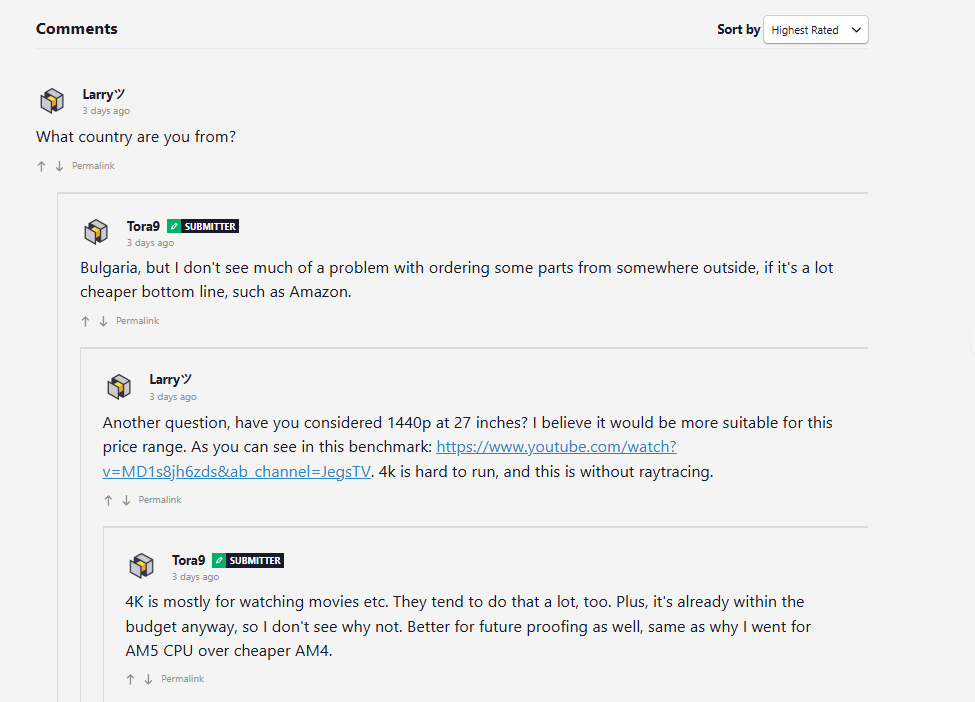
Advantages of thematic links:
- Higher weight in link equity calculations.
- Greater relevance for target search queries.
- Lower risk of algorithmic penalties.
- Higher conversion rates from traffic driven by these links.
Non-Thematic Links come from resources with little or no connection to the target site’s content.
Characteristics of non-thematic links:
- Lower weight in link equity calculations.
- Weaker impact on rankings for target queries.
- Higher risk of being perceived as unnatural if overused.
- Can be useful for diversifying the link profile.
Degrees of Relevance:
Relevance is not a binary characteristic. Search engines analyze a spectrum of relevance levels:
- High Relevance: Links from resources in the exact same niche (e.g., another SEO blog linking to an SEO site).
- Moderate Relevance: Links from related niches (e.g., a web design blog linking to an SEO site).
- Low Relevance: Links from loosely related niches (e.g., a general business resource linking to an SEO site).
- No Relevance: Links from completely unrelated niches (e.g., a cooking blog linking to an SEO site).
Modern search algorithms analyze the context surrounding a link to determine its relevance and naturalness, making organically integrated links the most valuable.
Additional Link Attributes: Sponsored, UGC, and Their Role
In September 2019, Google introduced two new link attributes, sponsored and ugc, complementing the existing nofollow attribute to provide more granular link classification.
Sponsored Attribute:
<a href="https://example.com" rel="sponsored">Anchor text</a>
The sponsored attribute is used for links resulting from paid agreements, such as sponsored content, advertisements, or paid reviews. It helps Google distinguish between organic and commercial links.
UGC Attribute (User-Generated Content):
<a href="https://example.com" rel="ugc">Anchor text</a>
The ugc attribute marks links in user-generated content, such as comments, forum posts, or reviews, helping search engines identify links not created by site owners.
Combining Attributes:
Attributes can be combined for precision:
<a href="https://example.com" rel="nofollow sponsored">Advertising link</a>
<a href="https://example.com" rel="nofollow ugc">Comment link</a>
Impact of Attributes on Link Equity:
- Links with these attributes may be indexed and affect crawling budgets.
- In some cases, Google may consider them for ranking calculations if deemed appropriate.
- Using accurate attributes instead of generic
nofollowdemonstrates transparency, which search engines view positively. - Platforms with extensive user-generated content can automate adding
ugcto comment links instead ofnofollow.
These attributes are part of Google’s broader approach to understanding the web ecosystem and building a more detailed link model. SEO professionals should use them appropriately to help search engines better interpret link types.
Factors Influencing Link Weight Transfer
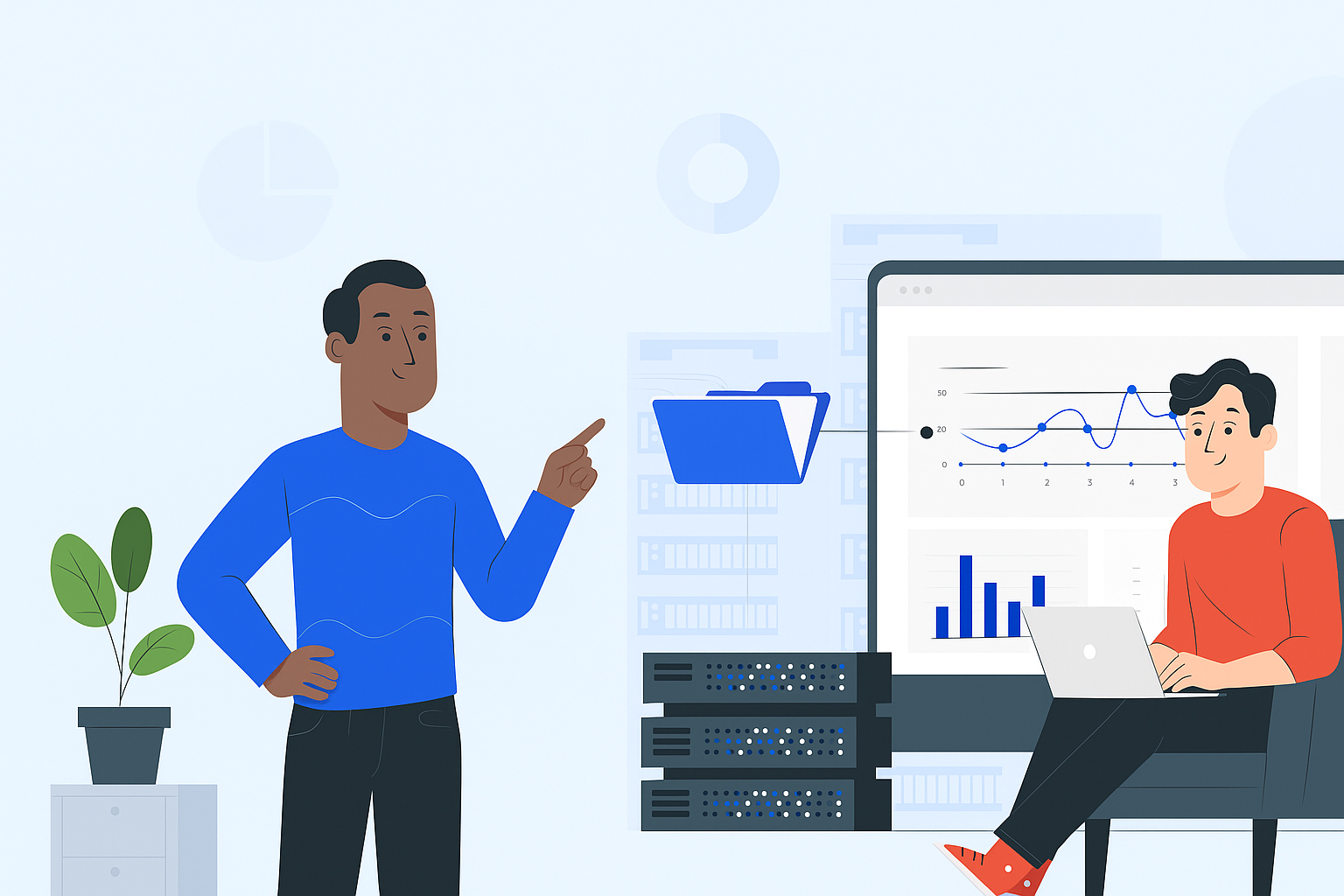
The mechanisms of link weight transfer are critical for building an effective SEO strategy. Search engine algorithms consider numerous factors when evaluating link equity and distributing link weight. Let’s explore the key factors impacting link weight transfer and determining link-building success.
Authority of the Donor Site and Its Impact on SEO Equity
The authority of the domain hosting a link is one of the most significant factors determining its value for SEO. Higher-authority donor sites transfer more link weight.
Components of Domain Authority:
- Domain History and Age: Older domains with a long online presence typically enjoy higher trust from search engines, transferring more link weight than newer sites.
- Backlink Profile: A donor domain’s authority depends on the quality and quantity of links pointing to it, creating a cascading effect of authority transfer.
- Thematic Expertise: Links from sites recognized as experts in their field carry greater value. Google evaluates topical authority using algorithms like E-A-T (Expertise, Authoritativeness, Trustworthiness).
- Traffic and Behavioral Metrics: Sites with high traffic, low bounce rates, and long user sessions are seen as more authoritative, making their links more valuable.
- Technical Health: Sites free of technical issues, with fast loading times and proper indexing, are considered more authoritative link sources.
Metrics for Assessing Authority:
Key metrics include:
- Domain Authority (DA) by Moz
- Domain Rating (DR) by Ahrefs
- Trust Flow (TF) by Majestic
- Authority Score by Semrush
These metrics are approximations and may differ from how search engines assess authority, but they provide valuable insights for comparing potential link donors.
Page-to-Page Authority Transfer:
Link weight transfer occurs not only at the domain level but also between individual pages. A page with high authority (e.g., a popular article with many incoming links) transfers more link weight than a lesser-known page on the same domain.
How Link Placement on a Page Affects Weight Transfer
The placement of a link on a donor page influences the amount of link weight it transfers. Search engines analyze the HTML structure and assign varying value to links based on their location.
Hierarchy of Link Positions by Impact:
- Links in Main Content: The most valuable links are embedded in the main content, especially early in the text, as they are seen as editorially significant and organic.
- Links in Headings and Subheadings: Links in headings (h1-h6) carry elevated value due to their structural importance.
- Links in Navigation Menus: These transfer moderate weight, distributed across all linked pages.
- Links in Sidebars: Sidebar links, often repetitive, carry less weight than unique contextual links.
- Links in Footers: These are typically the least valuable, as footers often contain functional or low-priority links.
Link Visibility:
Beyond placement, a link’s visibility to users matters:
- Visible links transfer more weight than hidden or subtle ones.
- Links “above the fold” (visible without scrolling) are more valuable.
- Links with larger fonts or visual emphasis may transfer more weight.
First Link Priority:
Some theories suggest that when multiple links on a page point to the same URL, search engines prioritize the first one. While Google hasn’t officially confirmed this, many SEO experiments support it. Thus, place critical links higher in the page’s code.
Contextual Relevance Around the Link
Search engines analyze the text surrounding a link to assess its relevance and naturalness.
Key Elements of Relevance:
- Thematic Alignment: The surrounding text should relate to the target page’s content. Higher thematic alignment increases transferred link weight.
- Logical Integration: Links should blend seamlessly into the content, appearing as a natural part of the narrative. Artificially inserted links transfer less weight.
- Semantic Proximity: Search algorithms evaluate the semantic field around a link to determine contextual appropriateness. Using related terms boosts link value.
- Contextual Block Size: Links surrounded by larger, relevant text blocks are more valuable. A paragraph of 3-5 sentences is optimal viewer.
Anchor Text and Its Impact:
The anchor text (clickable text) is a strong signal of the target page’s relevance:
- Exact-match keywords in anchors send the strongest relevance signal but risk appearing manipulative if overused.
- Partial-match keywords are safer and more natural.
- Branded anchors enhance brand recognition and appear organic.
- Generic anchors (“click here,” “learn more”) convey less thematic relevance but diversify the link profile.
Number of Links on a Page and Link Juice Distribution
The number of links on a donor page directly affects how much link juice each link transfers. This is based on the concept of distributing a finite resource – link juice.
Link Juice Distribution Model:
Per the classic PageRank model, a page’s link juice is divided among all outbound links. More links mean less weight per link.
Practical Implications:
- Pages with fewer links transfer more weight per link, making them more valuable donors.
- Juice Dilution: Adding new links reduces the weight of existing ones.
- Links to authoritative resources may positively influence a page’s overall evaluation, partially offsetting dilution.
Evolution of Link Juice Distribution:
While the classic PageRank model assumes even distribution, modern algorithms are more sophisticated:
- Weighted Distribution: Links may receive varying juice based on position, visibility, and context.
- Partial Distribution: Not all juice is necessarily distributed; some may remain on the page.
- User Behavior Impact: Links with higher click-through rates may receive more weight.
Optimization Strategies:
- Limit outbound links on key pages to maximize weight per link.
- Use nofollow for links that shouldn’t transfer juice, concentrating it on priority links.
- Structure internal linking to direct more juice to critical pages.
- Regularly audit outbound links to remove unnecessary or outdated ones that dilute juice.
Google’s Evolving Approach:
Google’s algorithms have moved beyond simple link juice distribution, incorporating hundreds of factors to assess link value. However, the core principles of link juice remain relevant for SEO professionals.
How to Enhance Link Juice
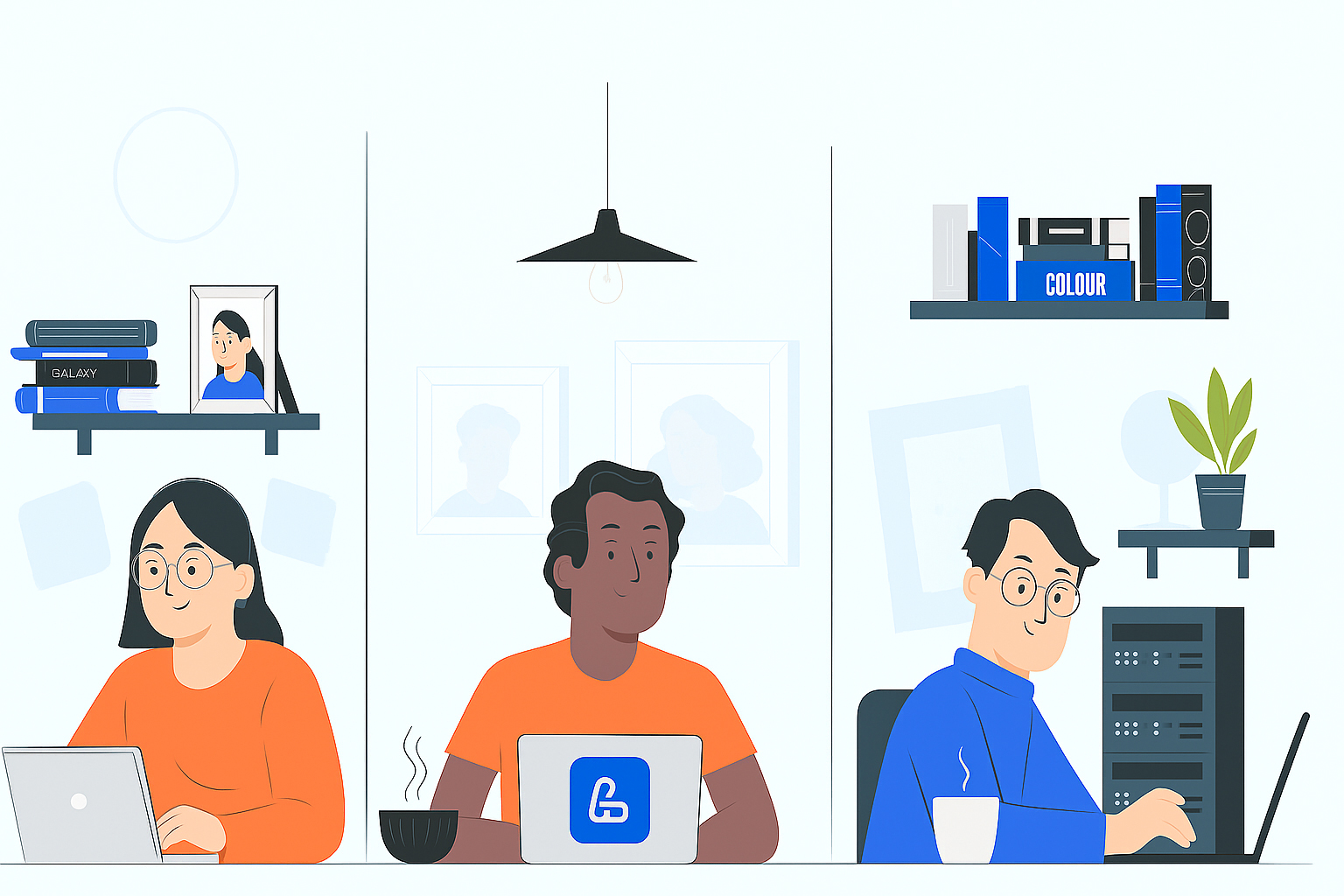
High-quality content is undoubtedly valuable, but actively improving your website’s link profile is equally essential.
Outreach Techniques for Earning Natural Links
Outreach is the process of proactively engaging with other website owners to secure links to your site. Modern outreach has evolved significantly from the mass email campaigns requesting link placements used in the past.
Principles of Effective Outreach:
- Personalized Communication – the cornerstone of successful outreach. Tailor each email to the specific website owner or editor. Mentioning their recent publications, shared interests, or values greatly increases the likelihood of a positive response.
- Focus on Audience Value – instead of directly asking for a link, highlight how your content benefits their readers. Emphasize unique data, research, or expertise you can offer.
- Consistent Engagement – effective outreach builds relationships, not one-off interactions. Adopt a phased approach: start with social media interactions or commenting on their content before proposing collaboration.
- Targeting Relevant Resources – quality trumps quantity. Carefully select sites whose audiences overlap with your target demographic. Use competitor analysis tools to identify where similar sites have earned links.
Practical Outreach Methods:
- Skyscraper Technique – identify popular content in your niche, create a superior version (more current, in-depth, or better designed), and reach out to those linking to the original, offering your improved alternative.
- Broken Link Building – find broken links on relevant sites and suggest replacing them with links to your relevant content. This approach is highly effective as it solves a problem for the site owner rather than just asking for a favor.
- Resource Page Link Building – locate resource pages listing useful tools or content in your niche and propose adding your site or specific material if it genuinely adds value to their audience.
Guest Posting as a Source of High-Quality Backlinks
Guest posting remains one of the most effective ways to acquire quality backlinks, contributing significantly to building a robust link profile.
Criteria for Effective Guest Posting:
- Focus on Authority – prioritize collaboration with platforms that have a genuine audience and expertise in your industry. One high-quality site can deliver more value than dozens of obscure blogs.
- Expert Content – publications should showcase deep topic knowledge and provide real value to readers. Superficial, SEO-driven articles won’t yield desired results.
- Organic Links – links in guest posts should feel natural, relevant, and contextually integrated into the content. Avoid forcing links unnaturally into the text.
- Long-Term Partnerships – aim for regular collaboration with a select few high-quality platforms rather than one-off posts across many sites. This enhances the authority and naturalness of your link profile.
Steps for Organizing Effective Guest Blogging:
- Preparation Stage – compile a list of potential platforms, analyze their audience, authority, content style, and publication requirements. Identify topics most relevant to each site.
- Establishing Contact – identify the right contact (section editor, content manager) and propose several topic ideas for potential posts. Highlight why you’re an expert in the subject.
- Content Creation – produce a post that meets the platform’s format and quality standards. Invest in high-quality content, as it’s a reflection of your reputation and link profile.
- Publication and Promotion – after publication, actively promote the post on your social media, respond to comments, and engage with the audience. This boosts the post’s impact and increases chances for future collaborations.
To find potential guest posting opportunities, use the free Guest Post Website Audit tool from LinkBuilder.com.
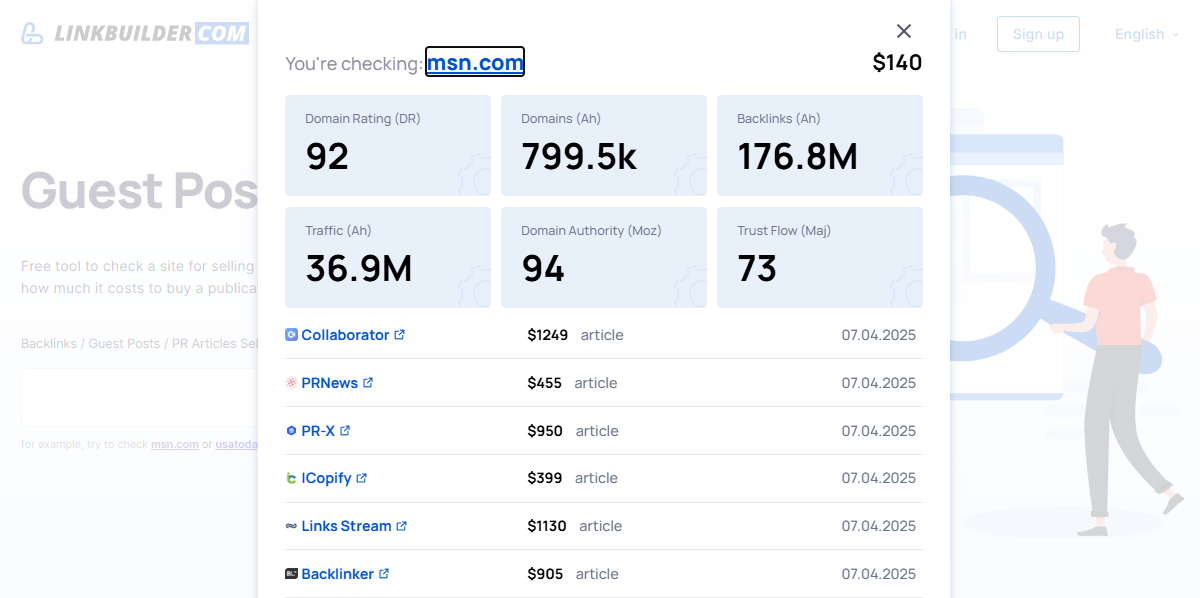
Digital PR for Building Backlink Capital
Digital PR combines traditional public relations with modern digital strategies to boost brand visibility and earn high-quality links. This approach focuses on creating and distributing content that naturally attracts attention from journalists, bloggers, and other media figures.
Key Components of a Successful Digital PR Strategy:
- Creating Newsworthy Content – develop content with news value, such as proprietary market research, trend analysis, expert forecasts, or unique data presented engagingly.
- Data Visualization – transform complex information into compelling infographics, interactive maps, charts, or videos. Visual content has higher potential for sharing and citation.
- Stories and Case Studies – journalists seek compelling stories. Documenting your company’s success stories or client experiences can serve as the basis for industry or mainstream media coverage.
- Expert Commentary – position key company figures as industry experts ready to provide insights on timely issues. Services like HARO (Help A Reporter Out) are effective for this.
Practical Digital PR Methods for Link Building:
- Newsjacking – quickly respond to trending news or topics with your expertise. This allows you to join high-profile discussions and earn mentions in relevant publications.
- Research and Reports – regularly conduct niche-specific research and publish the findings. Unique data and statistics are often cited by journalists with links to the source.
- Event Organization – host webinars, online conferences, or other events featuring prominent industry experts. Each event creates a media hook and opportunities for mentions across platforms.
- Charitable Initiatives and Social Projects – corporate social responsibility enhances brand image and provides grounds for positive media coverage with links to your site.
Internal Linking for Optimizing Link Capital
Internal linking not only aids search engine crawlers in indexing your site but also optimizes link capital by distributing page authority across your website. This critical aspect should not be overlooked.
The more link capital a page has, the higher its chances of ranking well in search results. Strategic internal linking distributes this capital to maximize support for conversion-focused pages and achieve business goals.
Internal links are hyperlinks connecting one page on your domain to another. They play a vital role in distributing link capital within the site and helping search engines understand content structure and hierarchy.
Functions of Internal Links in Link Capital Context:
- Redistributing Link Weight – internal links transfer link capital from stronger pages (e.g., homepage or popular articles) to strategically important pages needing ranking support.
- Establishing Importance Hierarchy – the number and quality of internal links to a page signal its relative importance within the site’s structure to search engines.
- Retaining Link Juice – a well-organized internal linking system minimizes link juice leakage off-site, preserving more link capital within your domain.
Internal Linking Structure for Maximum Link Weight Transfer
- Site Hierarchy for Linking
Effective link weight transfer begins with a well-structured site hierarchy. The traditional pyramid model – homepage at the top, categories on the second level, and subcategories on the third – remains the most effective for most projects. In this structure, pages are logically interconnected, allowing link weight to flow naturally.
For optimal link weight transfer, follow the three-click rule: any page should be accessible within three clicks from the homepage. This ensures search crawlers can regularly index all content, and link weight isn’t diluted en route to deeper pages. - Link Categorization by Importance
Not all internal links carry equal value. Distinguish between:
- Structural links (menus, breadcrumbs)
- Contextual links within content
- Recommendation blocks (“Related Articles,” “You May Also Like”)
- Anchor Text Optimization
Anchor text for internal links is a strong signal to search engines about the target page’s topic. Use keywords in anchors but avoid over-optimization:
- Vary anchor texts for the same page
- Incorporate keywords naturally
- Experiment with longer anchors containing multiple keywords
- Occasionally use branded anchors for diversity
Site Architecture Optimization for Efficient Link Mass Distribution
- Content Clustering
A well-designed site architecture involves creating topical clusters – groups of interconnected content unified by a common theme. The cluster’s core is typically a comprehensive pillar page, with subpages covering narrower subtopics linking back to the pillar and each other.
This structure offers several benefits:
- Concentrates link capital around pillar pages
- Provides clear topical relevance signals to search engines
- Enhances user navigation between related content
- Silo Structure
For large, complex sites, a siloed approach – distinct thematic sections – can be effective. In a silo structure:
- Pages within a silo extensively link to each other
- Cross-silo links are minimized
- Each silo has a main page receiving links from all pages within it
- Strategic Placement of Key Pages
When planning site architecture, position priority pages closer to the homepage. Pages at the first or second level of depth receive a larger share of link capital.
For deeply nested commercial or conversion pages, compensate by adding internal links from authoritative sections, such as popular blog posts or informational content.
Common Internal Linking Mistakes and Their Impact on Link Capital
- Excessive Links on a Page
A frequent error is placing too many links on a single page. While no strict limit exists, aim for a maximum of 100&-;150 links per page. Exceeding this dilutes link weight, reducing the “juice” each link passes to its target.
This is especially critical for high-authority pages like the homepage or category pages, which have the most link capital to distribute. - Ignoring Canonicalization Techniques
Improper use of canonical tags or link attributes scatters link capital across duplicate pages. For effective link capital optimization:
- Use
rel="canonical"to specify the primary page version - Apply
rel="nofollow",rel="sponsored", orrel="ugc"appropriately - Avoid linking to pages blocked in robots.txt
- Use
- Circular and Dead-End Links
Circular links (Page A → Page B → Page C → Page A) confuse search crawlers, complicating site hierarchy understanding and leading to inefficient link mass distribution.
Dead-end pages – those lacking outbound links to other site sections – accumulate link capital but fail to distribute it, acting as “black holes” for SEO value. - Neglecting Old Content Interlinking
Over time, sites accumulate content, and older pages often lack proper linking. Regular audits and updates of internal links on older pages reactivate their link potential, redirecting it to new priority pages.
Quarterly reviews of top-performing pages by traffic are recommended to add links to new materials needing a link boost. - Irrelevant Anchors
Irrelevant anchors are poorly chosen link texts that:
- Don’t match the target page’s content
- Lack relevance in the surrounding text
- Are used artificially or spammily without user benefit
- “Buy a TV” linking to an article on pet care
- Generic anchors like “here,” “click,” or “read more” without context
- Irrelevant Pages (Links to Unrelated Topics)
Irrelevant pages occur when a page links to others with no thematic or contextual connection.
Unrelated topics include:
- Target page themes misaligned with the source content
- Links offering no user value or additional information
- Links inserted solely for commercial purposes without context
Loss of Link Capital: Causes and Solutions

Link capital loss can occur subtly – backlinks exist, site structure seems clear, yet rankings drop, and traffic declines. What’s the cause? Each loss impacts organic visibility, so SEO specialists must understand the mechanisms and prevent them proactively.
Common Causes of Link Weight Loss
Deleting Pages Without Redirects
A leading cause of link capital loss is removing pages with inbound external or internal links without redirects. Deleted pages generate 404 errors, breaking links and halting link weight transfer, resulting in lost authority.
This is especially critical for popular content with significant natural links. Even if outdated, complete removal can severely harm the domain’s link profile.
Site Structure Changes
During redesigns or migrations, URL structures often change. Without proper redirects, this causes widespread link capital loss, as existing links point to outdated URLs.
This occurs during:
- HTTP to HTTPS transitions
- Domain name changes
- New CMS with different URL logic
- Site section restructuring
Overuse of nofollow, sponsored, and UGC Attributes
Excessive or unjustified use of attributes blocking link capital transfer is another common issue. While rel="nofollow", rel="sponsored", and rel="ugc" have valid uses, misapplication hinders effective link mass distribution.
Common errors include:
- Auto-applying nofollow to all internal links
- Indiscriminately using sponsored/ugc for all external links
Technical Site Issues
Various technical problems can impede link capital transfer:
- Slow Page Load Times: Search crawlers have limited crawl budgets. Slow-loading pages may prevent full link indexing.
- JavaScript-Dependent Links: Links generated or activated via JavaScript may not be crawler-readable, especially with complex implementations.
- Incorrect Canonical Tags: Misconfigured or conflicting canonical tags can redirect link capital to unintended pages or cause losses.
- Robots.txt Blocks: Accidentally blocking key pages in robots.txt prevents them from receiving link capital, even if linked.
301 and 302 Redirects: Impact on Link Capital Transfer
Redirect Types and Differences
Different redirects impact link weight transfer variably:
- 301 Redirect (permanent) – signals a page has moved permanently, transferring 95-99% of link capital per current estimates.
- 302 Redirect (temporary) – indicates a temporary move. Historically, it transferred less link weight, though Google’s algorithms are now more lenient.
- 307 Redirect – a modern temporary redirect preserving HTTP request methods, functioning similarly to 302 for SEO.
Cascading Redirects and Their Impact
Cascading (chained) redirects occur when one URL redirects to another, which redirects again, and so on. Each step reduces link capital:
URL A → URL B → URL C → URL D
Even with 301 redirects, the final page (URL D) receives significantly less link weight than a direct redirect:
URL A → URL D
Limit redirects to a maximum of two, ideally avoiding even short chains.
Temporal Aspects of Redirects
Long-term redirects negatively affect link capital transfer due to:
- Increased risk of technical errors
- Higher server load
- Complicated tracking of redirect issues
- Potential “forgetting” of original pages by search engines
Gradually update external and internal links to point directly to the final URL, phasing out redirects over time.
Strategies for Preserving and Recovering Link Capital
Link Auditing and Monitoring
Regular link profile audits are critical for preserving link capital. Recommended approaches:
- Monthly monitoring of new backlinks using tools like Ahrefs, Semrush, or Majestic
- Periodic checks for broken internal links (404 errors)
- Tracking competitors’ link profile changes for new opportunities
Focus on high-authority links, as they transfer the most link capital.
Redirect Strategy for Site Restructuring
During major site changes, develop a detailed plan to preserve link capital:
- Create a Redirect Map – list all old-to-new URL correspondences before migration.
- Prioritize Pages – focus on pages with the most inbound links and organic traffic.
- Use 301 Redirects – implement server-side permanent redirects for maximum link weight transfer.
- Update Internal Links – post-migration, update internal links to eliminate on-site redirects.
- Notify Partners – contact sites linking to you, requesting updates to new URLs.
Restoring Lost Content
- Reviving Popular Content – restore pages with significant backlinks, updating them with fresh information.
- Archiving with Redirects – for outdated content with valuable links, create an archived version with user explanations.
- Content Consolidation – merge similar pages into a comprehensive piece, redirecting old URLs to the new page.
Technical Optimization for Link Capital Preservation
Key technical optimizations include:
- Using canonical tags to combat duplicate content
- Optimizing page load speed for better crawling
- Maintaining a detailed XML sitemap prioritizing key pages
- Regularly checking robots.txt for erroneous blocks
- Monitoring server responses to quickly identify 404 errors
Monitoring and Protecting Link Capital

Link capital can change rapidly due to search engine updates and increasing demands for link quality.
Therefore, it’s essential to stay proactive by regularly monitoring your link profile, tracking new backlinks, assessing the quality of referring domains, and identifying irrelevant links. This approach enables timely responses to changes in SEO, reducing the risk of search engine penalties, eliminating low-quality or spammy links, and maintaining a healthy link profile that boosts your site’s search rankings.
Tools for Monitoring Backlink Profiles
Professional Backlink Analysis Services
The modern market offers numerous tools for monitoring backlink profiles. The most popular and effective ones include:
- Ahrefs – A market leader with an extensive link database, providing detailed insights into anchors, domains, pages, and historical link dynamics. Key metrics include Domain Rating (DR), URL Rating (UR), and Ahrefs Rank.
- Semrush – A versatile platform with a robust backlink analysis module, allowing tracking of new and lost links, quality assessment, and competitor link profile comparisons.
- Majestic SEO – A specialized tool with proprietary Trust Flow and Citation Flow metrics to evaluate link quality and authority.
- Moz Pro – A tool with well-developed Domain Authority (DA) and Page Authority (PA) metrics, offering insights into the potential ranking impact of links.
- Google Search Console – A free Google tool displaying a portion of indexed links. While not comprehensive, it provides valuable data on links Google deems significant for your site.
Notification Systems and Monitoring Automation
For efficient monitoring, set up notification systems to quickly respond to changes in your link profile:
- Configure weekly or monthly reports on new and lost links.
- Set up alerts for changes in key metrics (e.g., sudden DR/DA drops or increases in toxic links):
- Email or Slack notifications:
- Frequency: Daily, weekly, or monthly.
- Events:
- New link from an authoritative source.
- Loss of a valuable link.
- Appearance of a spammy/toxic domain.
- DR/DA decline.
- Metrics to monitor:
- DR/DA (Ahrefs/Moz).
- Spam Score (Moz).
- Trust Flow/Citation Flow (Majestic).
- Number of toxic domains (Semrush).
- Number of nofollow/dofollow external links.
- Email or Slack notifications:
- Use tool APIs for integration with internal monitoring systems.
How to Use APIs for Automation:
- Integrate SEO data into internal CRM or BI systems (e.g., Power BI, Looker Studio).
- Create dashboards for new/lost links.
- Set up automated alerts via Slack or Telegram bots.
What You Need:
- Obtain an API key (from Ahrefs, Semrush, etc.).
- Set up regular queries (cron jobs):
- For example, query
GET /backlinksdaily via Ahrefs API.
- For example, query
- Process data in scripts or integration platforms (Zapier, Make.com, or custom systems).
- Output key events to:
- Google Sheets (for simple dashboards).
- Slack/Telegram (via Webhooks).
- Email notifications (SMTP/SendGrid API).
Monitoring frequency depends on the site’s size and link profile dynamics. For large projects, weekly reviews of new links are optimal, while smaller projects may suffice with monthly analyses.
Tracking Key Metric Dynamics
Beyond direct link analysis, monitor the dynamics of key metrics reflecting the overall health of your link profile:
- Total number of links and referring domains.
- Anchor distribution (branded, commercial, URL anchors).
- Dofollow/nofollow link ratio.
- Link distribution by page type (homepage, categories, products, articles).
- Quality metrics of referring domains (DR/DA/TF/CF).
Track trends in these metrics, especially after major search engine algorithm updates.
Identifying and Neutralizing Low-Quality Links
Signs of Toxic Links
Low-value links can harm organic visibility. Key signs of toxic links include:
- Originating from low-quality sites (low DR/DA, minimal organic traffic).
- Placement on thematically unrelated resources.
- Over-optimized anchors with exact-match keywords.
- Unnatural placement patterns (e.g., many links from a single IP).
- Links from sites with questionable reputations (e.g., adult sites, online casinos, illegal content).
- Sudden spikes in link volume over a short period.
- Links from auto-generated content.
Process for Neutralizing Low-Quality Links
After identifying toxic links, follow these steps to neutralize them:
- Analysis and Categorization – Thoroughly verify whether a link is truly toxic, not just irrelevant. Misidentifying a quality link as toxic can lead to losing valuable link capital.
- Removal Attempts – Contact site owners hosting low-quality links and request removal. Be specific, providing the URL of the linking page and the target page.
- Document the Process – Keep records of all attempts to contact webmasters for link removal. This documentation is useful if you need to prove to Google your efforts to clean your link profile.
- Use the Disavow Tool – If removal is impossible, use Google’s Disavow Tool (see next section).
Using the Disavow Tool to Protect Your Link Profile
Google’s Disavow Tool allows you to inform the search engine about unwanted links you cannot remove manually. Google will discount these links when evaluating your link profile.
Use this tool cautiously and only in these cases:
- You receive a manual penalty notification for unnatural links.
- You have strong evidence your site is affected by algorithmic filters due to low-value links.
- You identify clearly spammy or malicious links that cannot be removed.
Google recommends attempting manual link removal first, using the Disavow Tool as a last resort.
Creating a Disavow File Correctly
A Disavow file is a .txt file listing URLs or domains you want to disavow. File creation rules:
- Use UTF-8 encoding.
- List each domain or URL on a separate line.
- To disavow all links from a domain, use the format:
domain:example.com. - To disavow a specific page, provide the full URL.
- Add comments by starting lines with “#”.
Example Disavow File:
# Disavow file for example.com # Created: 2025-05-20 # Disavow specific URL: https://spammy-website.com/bad-link.html # Disavow entire domain: domain:toxicdomain.net
Monitoring the Impact of Link Disavowal
After uploading the Disavow file, track its impact:
- Effects are not immediate; Google must reindex disavowed pages.
- Monitor organic visibility trends.
- Track link profile quality metrics.
- Regularly update the Disavow file with new low-value links.
Regular Link Capital Audits: What to Focus On
Audit Frequency and Scope
Audit frequency depends on site size and link growth dynamics:
- Large Sites: Quarterly comprehensive audits with monthly monitoring of new links.
- Medium Sites: Biannual audits with quarterly reviews of new links.
- Small Sites: Annual audits with quarterly checks of new links.
Conduct unscheduled audits after major Google algorithm updates or sudden changes in organic visibility.
Key Elements of a Link Profile Audit
During a link capital audit, focus on:
- Structural Analysis:
- Link distribution across page types.
- Balance between homepage and internal page links.
- Link distribution by content type (commercial vs. informational).
- Referring Domain Quality Analysis:
- Authority profile of referring domains.
- Thematic relevance of domains.
- Geographic link distribution.
- Anchor Text Analysis:
- Natural anchor distribution.
- Percentage of commercial, branded, and URL anchors.
- Identification of over-optimized anchors.
- Link Profile Dynamics:
- Link growth and loss rates.
- Seasonal fluctuations in link activity.
- Comparison with historical data.
Competitor Benchmarking
A critical audit component is comparing your link profile to competitors:
- Identify 3&-;5 top competitors with the best organic visibility.
- Compare overall metrics (number of referring domains, quality, link distribution).
- Analyze competitors’ link acquisition strategies.
- Identify link sources they use but you lack.
- Compare link growth dynamics over the past 6&-;12 months.
This analysis helps uncover gaps in your strategy and identify new link-building opportunities.
Comprehensive Link Capital Management
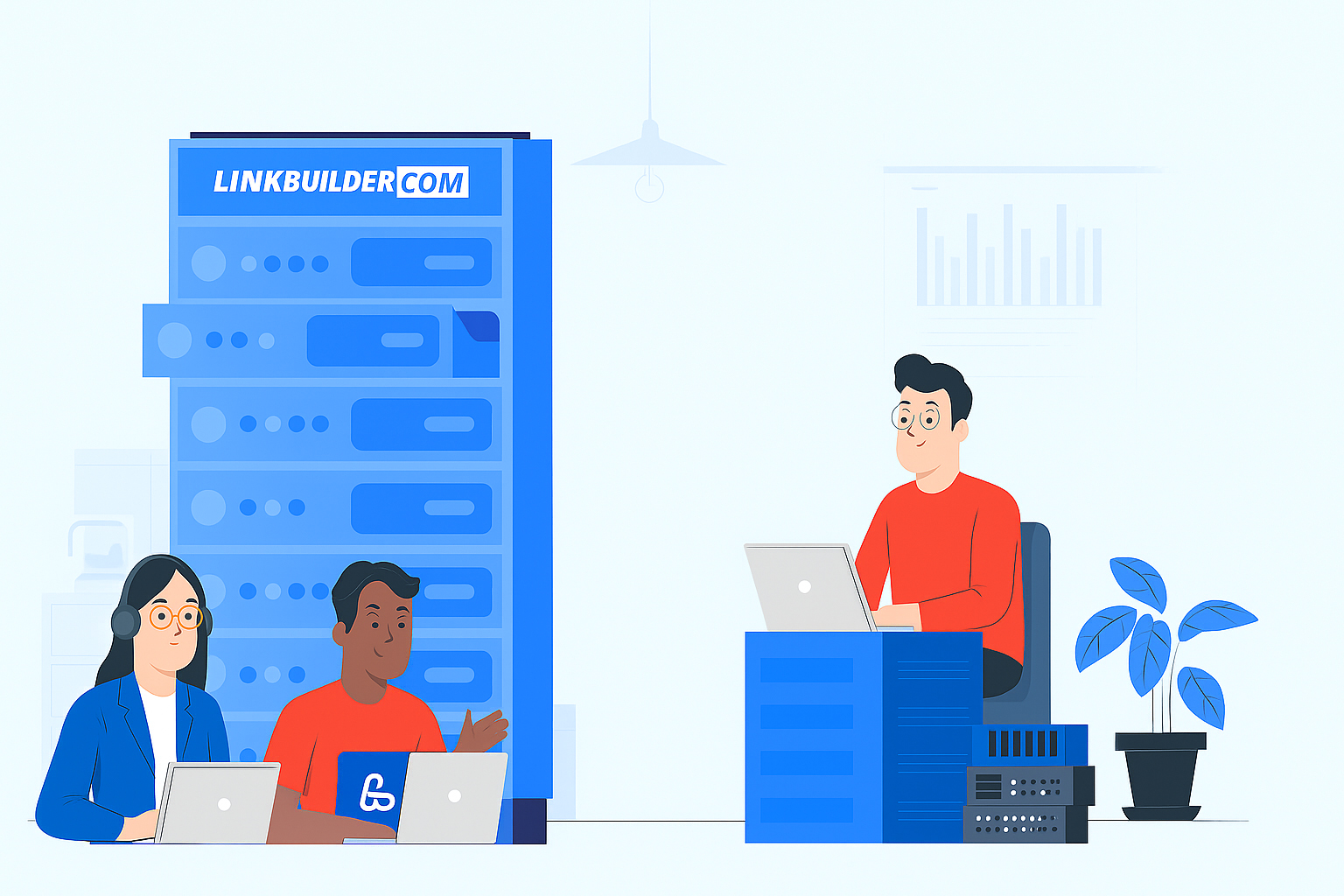
Search engine algorithms are constantly evolving. To ensure your backlink profile delivers tangible ranking results, adhere to the core principles of a successful link-building strategy.
Key Principles of a Successful Link Capital Strategy
Source Relevance
Links from thematically relevant sources carry significantly more authority than numerous irrelevant links. For maximum effectiveness:
- Identify key thematic clusters for your niche.
- Find authoritative resources within these clusters.
- Develop a strategy to engage these resources for quality links.
Natural Link Profile
Artificially created link profiles often have identifiable patterns detected by search engine algorithms. A natural link profile features:
- Diverse link sources.
- Varied anchors (branded, non-anchored, URLs, keywords).
- Organic link growth without sudden spikes.
- Inclusion of nofollow links in the overall structure.
Value for the Audience
The most sustainable link profiles are built around content that provides real value to users. This approach involves:
- Creating content that addresses specific audience pain points.
- Developing unique data, research, or tools to encourage natural mentions.
- Focusing on shareable and citable formats (infographics, studies, guides).
Balancing Quality and Quantity in Backlink Profiles
Defining Optimal Metrics
The ideal balance of link quality and quantity varies by project, depending on:
- Niche competitiveness.
- Current link profile state.
- Project development stage.
- Topic specifics.
Diversifying Link Types
A balanced link profile includes various link types:
- Editorial links from authoritative industry sources.
- Contextual mentions in thematic articles.
- Listings in directories and business profiles.
- Mentions on social media.
- Links from forums and discussion platforms.
Each type plays a role in forming a cohesive link profile, with the optimal mix depending on project specifics.
Integrating Link Capital Work into Your SEO Strategy
Aligning Content and Link-Building Strategies
An effective approach synchronizes content creation with link-building plans:
- Prioritize content with high potential for natural link acquisition.
- Create thematic content clusters with internal cross-linking.
- Develop linkbait materials for specific link-building campaigns.
Ensuring Technical Performance
Even the highest-quality links won’t maximize benefits if the site has technical issues:
- Ensure proper link equity transfer via optimized internal linking.
- Resolve indexing issues for efficient link utilization.
- Optimize page load speed for effective crawler scanning.
Analytics and KPIs for Link Capital
Link capital efforts should rely on clear metrics:
- Define key performance indicators (DR/DA growth, improved search visibility, organic traffic increases).
- Regularly analyze the impact of new links on rankings.
- Integrate link data with user behavior insights.
Long-Term Perspective for a Quality Link Profile
Resilience to Algorithmic Changes
A quality link profile ensures resilience to search engine algorithm updates:
- Natural links from authoritative sources remain valuable regardless of algorithmic shifts.
- A diverse link profile reduces risks from changes in ranking factor weights.
- Focus on professional and industry resources guarantees stable link value.
Link Profile as a Foundation for Stable Traffic
In the long term, a quality link profile becomes a valuable asset:
- Increases the overall value of your online presence.
- Creates a “protective barrier” for new competitors, who struggle to replicate your link profile.
- Establishes a stable source of targeted traffic, independent of algorithm fluctuations.
By ensuring a steady influx of quality backlinks, you build a robust and authoritative site profile, making your link capital more valuable and credible in the eyes of search engines. You can plan your link-building strategy independently, hire a trusted agency for professional services, or leverage powerful tools to strengthen, distribute, and optimize your link capital effectively.
How LinkBuilder.com Can Boost Your Link Capital
For a progressive agency that embraces challenges and delivers innovative solutions, no task is impossible. In the SEO landscape, a strong link profile is the key to success, and we build our strategies on quality resources.
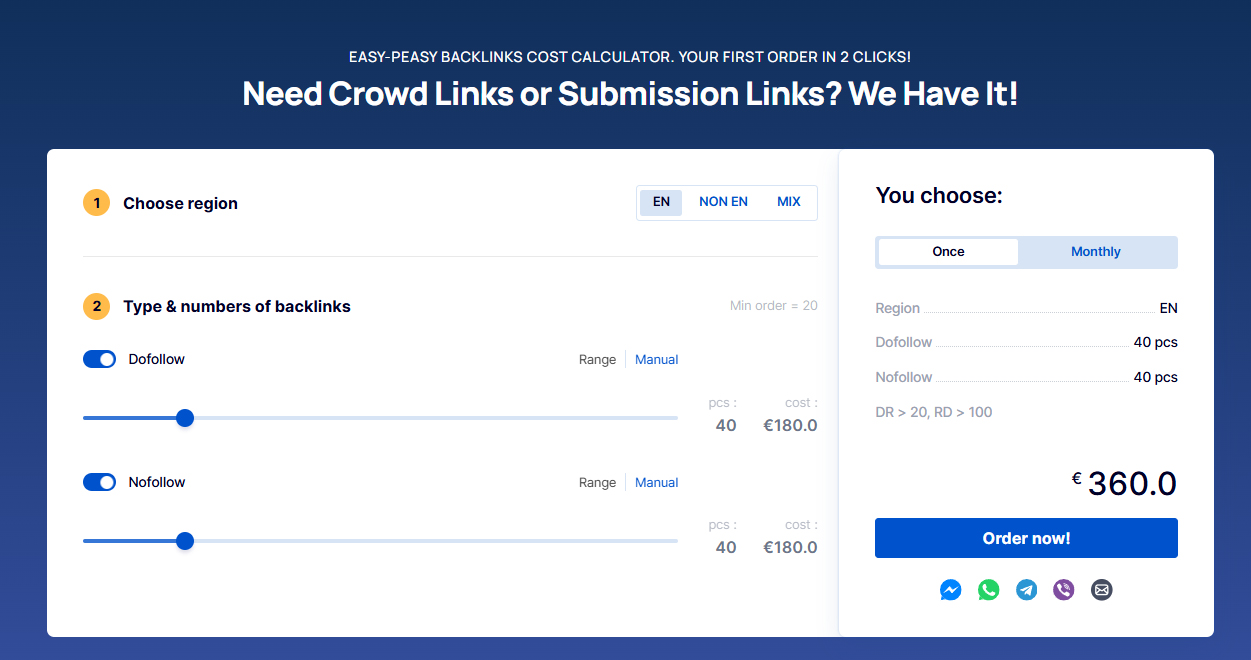
To enhance your site’s authority and drive stable traffic, we offer a tool for selecting top link donors. This is the largest database of sites for outreach and guest posts, invaluable for any SEO specialist or link builder. Need precise link costs? Our backlink calculator tailors the optimal link volume at competitive prices. Unsure if a site accepts guest posts? Try our free Guest Post Website Audit tool – enter a domain and get a detailed report on available guest post vendors. Know your competitors but want to see where they place guest posts? Use our Guest Post Scanner – upload a backlink list and get a ready-made link-building strategy with our free SEO Cost Calculator.
As a bonus, LinkBuilder.com offers up to 70% savings on permanent guest post links, with a minimum order of just one backlink. Our analytical tools and extensive functionality support comprehensive web resource promotion, boosting brand awareness and building a positive digital reputation.
Additional LinkBuilder.com Advantages:
- Largest Link Database – LinkBuilder.com provides access to a vast array of platforms for crowd links, submissions, guest posts, blogs, social media, microblogs, directories, and media outlets. With over 300,000 sites, it’s the largest database among agencies.
- User-Friendly Dashboard – Designed for efficient link strategy management, our multi-level metrics system enables quick discovery of relevant platforms, sorting by key criteria, creating custom lists, and exporting data for further analysis.
- Innovative Aggregator Concept – LinkBuilder.com consolidates offerings from various exchanges and providers on a single platform. This allows users to compare options, select the best deals, and streamline the process of finding and purchasing quality links without registering on multiple platforms.
LinkBuilder.com is the ideal solution for building strong authority and optimizing link capital distribution. With a vast database of authoritative sites and unique tools, LinkBuilder.com ensures the success of any link-building strategy, aligning with your business goals and driving sustained search ranking growth.








